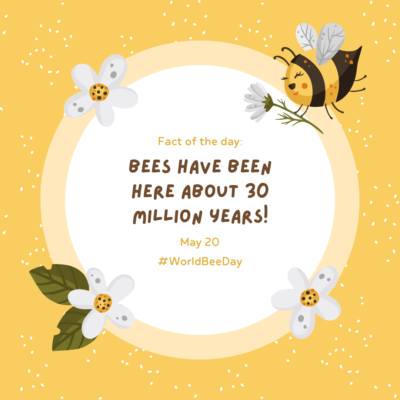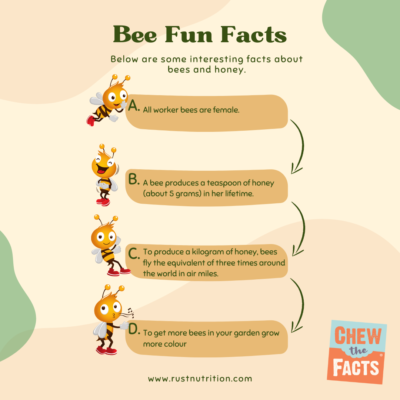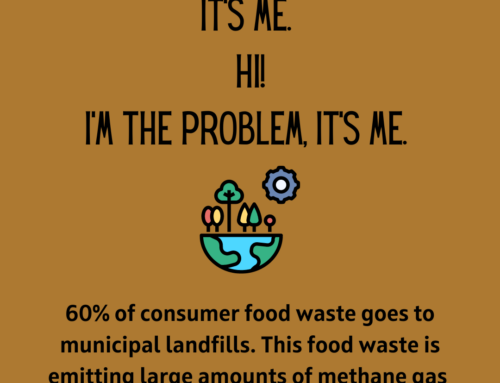I had the opportunity to tour the Savannah Bee Company store and hives, courtesy of a visit sponsored by the National Honey Board. The National Honey Board promotes responsible industry practices that ensure the honey you consume is trustworthy and pure. They also advocate for sustainable production of honey. I was not paid to write this post nor create content about it.

According to the Savannah Bee Company owner Ted Dennard, every bee colony visits over five hundred million flowers a year. Whoa. I learned lots of fun facts about bees and honey on my tour that I’ll share here. In addition, there are ways you can help support the sustainability of this important pollinator. Read on.
The Bees
The most popular and common species of honey bee is the Western Honey Bee. Bees have very specific roles to play in pollination, nectar gathering, hive safety, and reproduction within a hive, or colony. To note – the popular “Bee Movie” got a lot wrong about the roles of each type of bee in the hive:
🐝 Drones are the male bees. The boys don’t do any of the work in honey production nor pollination! They fly fast and their sole purpose is to mate. They die in 90 days.
🐝 Worker bees are the smallest bees. They are non-reproducing females (yep, the ladies do all the real work). Her life expectancy is about 35 days, but when born in October can often work through the winter.
🐝 Workers serve the Queen bee. They feed her, and any larvae, guard the hive entrance, and fan their wings to cool down the hive. They come and go to collect nectar and create the hive comb.
🐝 Young workers secrete a substance called “royal jelly” from their heads. The Queen natures and grows larger because she’s fed this royal jelly.
🐝 The Queen lives 2-5 years, and mates with numerous drones to produce more worker bees. Contrary to popular belief, the queen doesn’t really “run the hive”, her primary role is to procreate, laying eggs every couple of hours. She lays up to 3,000 eggs per day throughout the colony!
The Honey 🍯
Honey is the natural nectar that bees retrieve from flowers after they return from pollinating. Honey bees make honey by taking nectar and passing it through a line of worker bees in the hive, who mix it with chemicals in their bodies before placing it in a honeycomb cell where it eventually becomes the final, thick, sweet product. They fan the cells with their wings to encourage the evaporation of water.
Of course, nutritionally, honey is simply a sugar. Similar to other caloric sweeteners, it’s composed of fructose and glucose. It does however contain trace vitamins and minerals. It’s been know to be an effective cough suppressant and can soothe a sore throat.
Honey Varietals
Depending on its flowering plant source, bees produce different varietals of honey that vary in color and flavor. Beekeepers can place hives near particular blooms, or areas that cultivate certain plants, to produce specific honey varietals.
🐝 Wildflower honey is the most common. It’s produce by a variety of flowers. This honey is great for salad dressings or in your cup of tea.
🐝 Clover honey is also a great multi-purpose honey to use in cooking, for desserts or with tea.
🐝 Orange 🍊 blossom honey is from the orange tree blooms of Florida, Texas, California, and Arizona. This honey is nice served over fruit or paired with wine and cheese.
🐝 Tupelo honey is more rare, and unique in properties and flavor. Due to its higher fructose content, it does not crystallize (the higher fructose allows it to have a lower glycemic index too).

Food waste note: Honey lasts indefinitely. Wildflower honey that crystallizes is still perfectly safe to consume. You can place it in a bowl of warm water, or heat it, to dissolve the crystals if you like.
From Honeycomb to Space Exploration
Honeycomb is made from a wax secreted within a bee’s body. A honey bee has 8 wax-producing glands. Young bees secrete the wax that creates the honeycomb. Other worker bees chew the wax to soften it to create the comb. Other bees will seal a full cell of honey with a wax cover. Bees make honey by taking nectar and passing it through a line of worker bees who mix it with chemicals in their bodies before placing it in a cell to finish its transformation.
The hexagon shape of honey comb is designed by nature! Worker bees create holes in a circular tube, in rows, in the wax comb. The activity of the bees creates heat that softens the wax. Click To TweetThe softened wax hardens into the most ergonomically favorable configuration – HEXAGONS! Nature itself provides this efficient space-saving shape that allows for the maximum use of space in the bee hive. Also of interest, the James Webb telescope used the hexagon shape to create its mirror for maximum light collection! A circular mirror would have wasted light space. Mind blown.
No Bees, No Food
Of course in addition to creating honey, honey bees are responsible for pollination. Bees play a key role in agriculture. In addition to thanking a farmer, you’ll want to also thank a beekeeper. Many agricultural companies are working to help protect bees.
Beekeepers are responsible for many of the ingredients that contribute to a balanced and healthy diet. About one-third of our fruits, nuts, legumes, and vegetables are a result of pollination by honey bees. A third of our diet is derived from insect pollinated plants – and honey bees pollinate 80% of these plants. In addition to their contribution to food production, bees are an important part of the overall health of the environment. They contribute to wild plant pollination and also provide a food source to wildlife within local ecosystems.
“Bee” Awesome
You can help support honey bees when you add flowering plants to your yard or garden. Honey bees and butterflies (also pollinators) are attracted to bright colors. Also, never hurt a honey bee! They really don’t want to sting you. Staying calm around bees (no swatting) lets them know you are not a threat.




